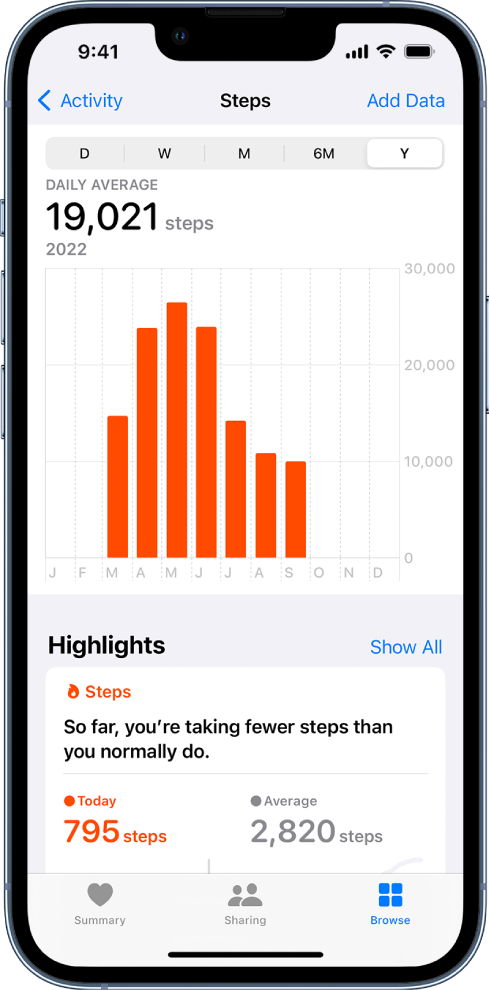Intro to Health data on iPhone
-
Steps, flights of stairs, and other walking data: Built-in sensors on your iPhone capture the number of steps you take, the number of flights of stairs you climb, your walking speed, and more. You can browse highlights, trends, and details about this data in the Activity category in Health.

-
Mobility data: iPhone stores important mobility metrics such as walking asymmetry, double support time, and more. Over time, as you walk with iPhone in your pocket or wear it near your waist, these metrics are used to calculate and record your walking steadiness. You can browse this data in the Mobility category. You can also receive a notification and share your notification with others if your steadiness becomes low enough to put you at increased risk of falling in the next 12 months.
-
Headphone audio levels: Audio level measurements from connected AirPods, EarPods, or other compatible headphones are automatically stored in Health. You can review this data in the Hearing category to help you understand your headphone listening habits.
-
Sleep history: If you set up a sleep schedule in Health, iPhone estimates the periods you’re lying in bed with the intention to sleep. You can review this data in the Sleep category to help you meet your sleep goals.
-
Health records from your healthcare providers: You can set up automatic downloads of health records of your allergies, medical conditions, medications, and more from supported healthcare organizations (not available in all countries or regions). You can browse these records in Health.
iPhone automatically stores and analyzes valuable health data, including the following:






